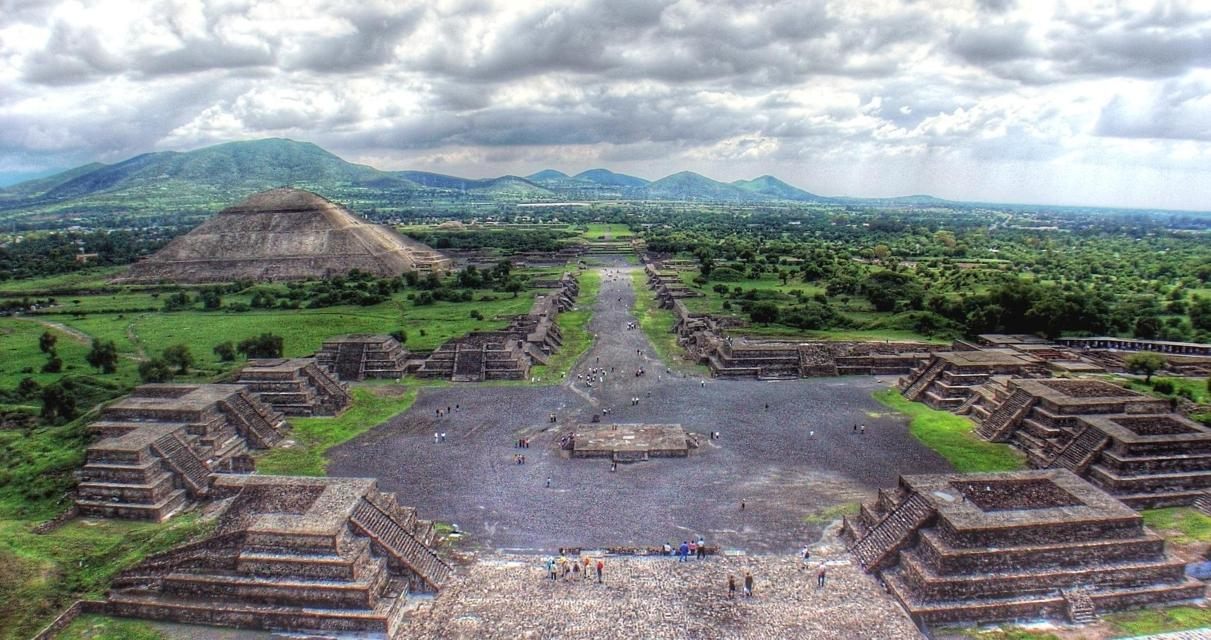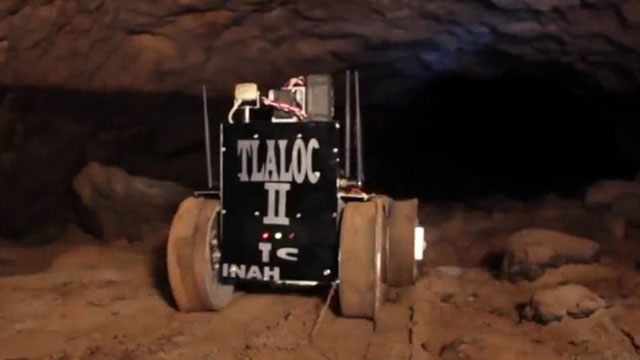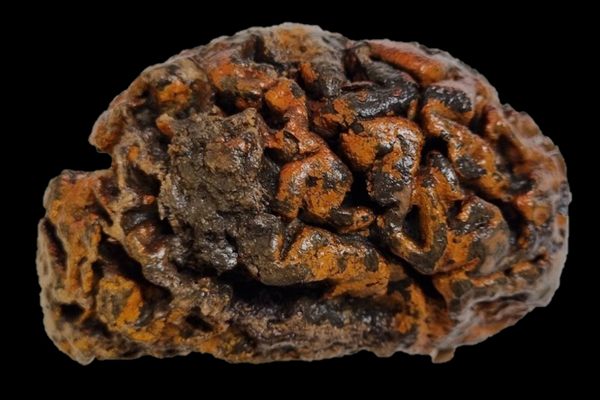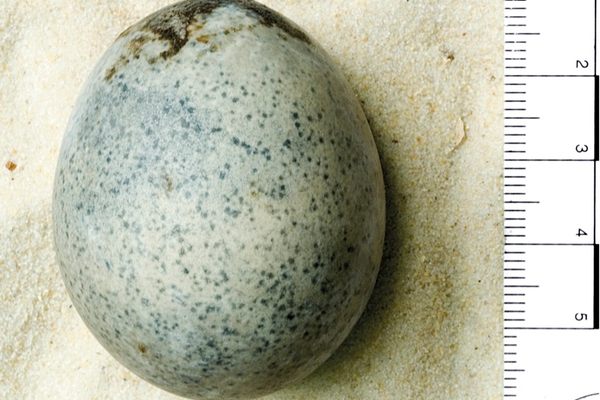Robots Lead Archaeologists to Sacred Tunnels in Teotihuacán Ruins
 Panorámica de Teotihuacan (image via José Luis Ruiz / Flickr)
Panorámica de Teotihuacan (image via José Luis Ruiz / Flickr)
Archaeologists may be a bit closer to solving one of the greatest ancient Mesoamerican mysteries: Who ruled the ancient city of Teotihuacán, and where are they buried? Small remote-controlled robots have led the team excavating the ruins to a cache of around 50,000 objects — from intricately carved sculptures to obsidian blades to jewelry — in a tunnel underneath the Temple of the Plumed Serpent that is now believed to lead to the royal tombs.
 One of the feathered serpent heads that decorated the Temple of the Feathered Serpent (image via Jami Dwyer / Wikimedia)
One of the feathered serpent heads that decorated the Temple of the Feathered Serpent (image via Jami Dwyer / Wikimedia)
Although Teotihuacán was once one of the largest cities in the world, with an estimated 125,000 residents at its peak, little is known about it. The city, which is about 30 miles from what is now Mexico City, was established around 100 BCE and is believed to have lasted until the 7th century CE, when it was abandoned. It was an industrial hub and achieved great wealth as a center for the obsidian trade, and the ruins now cover 32 square miles of temples, pyramids, and residences. It is not known what the city was called by those who built and lived in it; the Aztecs gave it the name Teotihuacán, which means something like ”The Place Where Men Become Gods.”
The city’s main thoroughfare is called the Street of the Dead, which is bound on one end by an enclosed courtyard that contains the Temple of the Plumed Serpent, a six-level pyramid. The 330-foot tunnel runs 40 feet beneath the temple and was intentionally sealed 1,800 years ago, its entrance covered with rocks and the tunnel itself filled with debris, including the remains of hundreds of sacrificial bodies. The existence of the tunnel and its chambers was not discovered until 2003, and excavations have barely begun. Last year the robots were deployed at the site for the first time, and hundreds of orbs covered in pyrite, also known as “fools’ gold,” were discovered.
 The remote-controlled Tlaloc II-TC (image via INAH Mexico)
The remote-controlled Tlaloc II-TC (image via INAH Mexico)
The remote-controlled robots, called Tlaloc-II after the Aztec god of rain, are small vehicles equipped with lasers, scanners, and a video camera to take measurements and relay images above ground. So far the team, led by archaeologist Sergio Gomez of Mexico’s National Institute of Anthropology and History, has excavated only two feet into the chamber, but they’re confident this is the royal burial site they’ve been searching for. “It can’t be in any other place,” Gomez said. “We’ve been able to confirm all of the hypotheses we’ve made from the beginning.”











Follow us on Twitter to get the latest on the world's hidden wonders.
Like us on Facebook to get the latest on the world's hidden wonders.
Follow us on Twitter Like us on Facebook